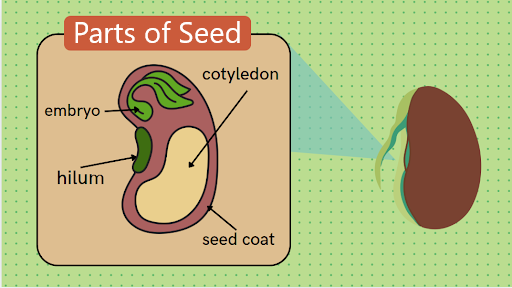Plant Propagation: Seeds, Germination, Asexual & Sexual Reproduction
Plant propagation is the process of growing new plants from a variety of sources: seeds, cuttings, and other plant parts. This process helps in increasing the number of plants and maintaining plant species. There are two main types of plant propagation: sexual and asexual. Now let's start with seeds first.
A seed is the reproductive unit of angiosperms (flowering plants) capable of developing into another such plant. The following are it's parts:
|
Seed Part |
Function |
Example |
|
Seed Coat |
Protects the seed from damage & disease |
Beans, Peas |
|
Endosperm |
Stores nutrients for the growing embryo |
Coconut, Corn |
|
Embryo |
Develops into a new plant |
All flowering plants |
Below is the diagram of it's parts.
They have an outer shell called the seed coat that protects them from bad weather, physical damage, & germs. It has a hard seed coat.
A small scar, the hilum, shows where the seed attached to the fruit.
The embryo is the small developing plant contained within the seed.
The seed has Cotyledons, a structure that stores nutrients to feed the embryos.
Seeds are classified as two types based on the number of cotyledons:
-
Monocotyledons (Monocots): Seeds that contain one cotyledon or seed leaf. Such as maize, rice, & wheat.
-
Dicotyledons (Dicots): These seeds have two cotyledons or seed lobes. Examples of pulse crops include gram, beans & peas.

Germination
Germination is the process that occurs when a dormant seed meets the conditions it requires to sprout (hatch) into a seedling.
Stages of germination:

1. The seed absorbs water and swells.
2. The seed coat breaks open.
3. The root (called radicle) grows down into the soil.
4. The shoot (called plumule) grows upward.
5. The baby plant starts making its food using sunlight.
Conditions required for germination:
1. Water – Softens the seed coat & activates enzymes.
2. Oxygen – Needed for respiration and energy production.
3. Suitable Temperature – Varies among different species; usually between 20 - 30°C.
Seed Dispersal
Seed dispersal is the process by which seeds are spread away from the parent plant to avoid overcrowding & competition. Seed dispersal is a phenomenon carried out by different agents of nature to propagate plants.
Types of Seed Dispersal
|
Dispersal Type |
Description |
Examples |
|
Wind Dispersal |
Seeds are light & have wings or hair-like structures |
Dandelion, Maple, Cotton |
|
Water Dispersal |
Seeds float and travel through water |
Coconut, Lotus |
|
Animal Dispersal |
Seeds stick to animal fur or are eaten & excreted |
Mango, Cherry, Tomato |
|
Explosive Dispersal |
Pods burst open, scattering seeds |
Pea, Balsam |
Below is the diagram for the dispersal of seeds.
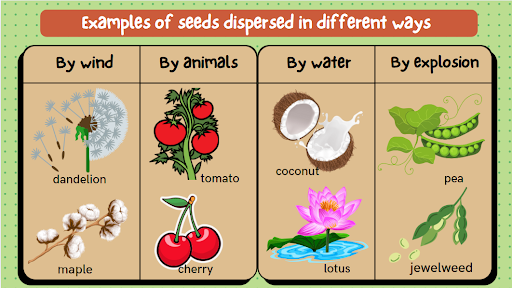
Vegetative Propagation
Vegetative propagation is an asexual method where new plants grow from roots, stems, or leaves without seeds.
Types of Vegetative Propagation
| Type | Description | Example |
| Natural Vegetative Propagation | Happens naturally through modified stems, roots, or leaves | Tubers (Potato), Runners (Strawberry) |
| Artificial Vegetative Propagation | Done by humans to produce identical plants | Grafting (Mango), Cutting (Rose) |
Natural Vegetative Propagation
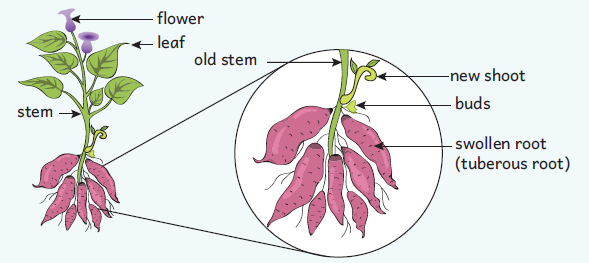
Tubers in Sweet Potato
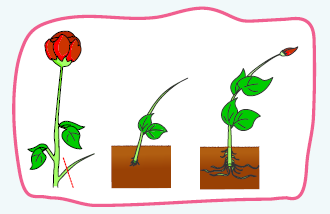
Cutting in Rose
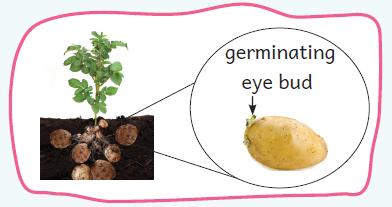
Eye Buds in Potato
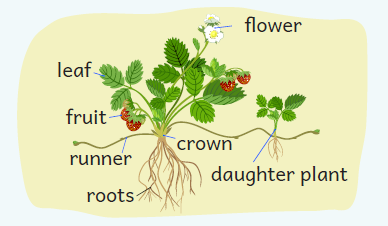
Runners in strawberry
Artificial Vegetative Propagation
-
Cuttings – A piece of stem or leaf is cut & placed in soil (e.g., Rose, Money plant).
-
Grafting – A branch from one plant is joined to another plant (e.g., Mango, Apple).
-
Layering – A stem is bent to the ground & covered with soil to form new roots (e.g., Jasmine, Strawberry).
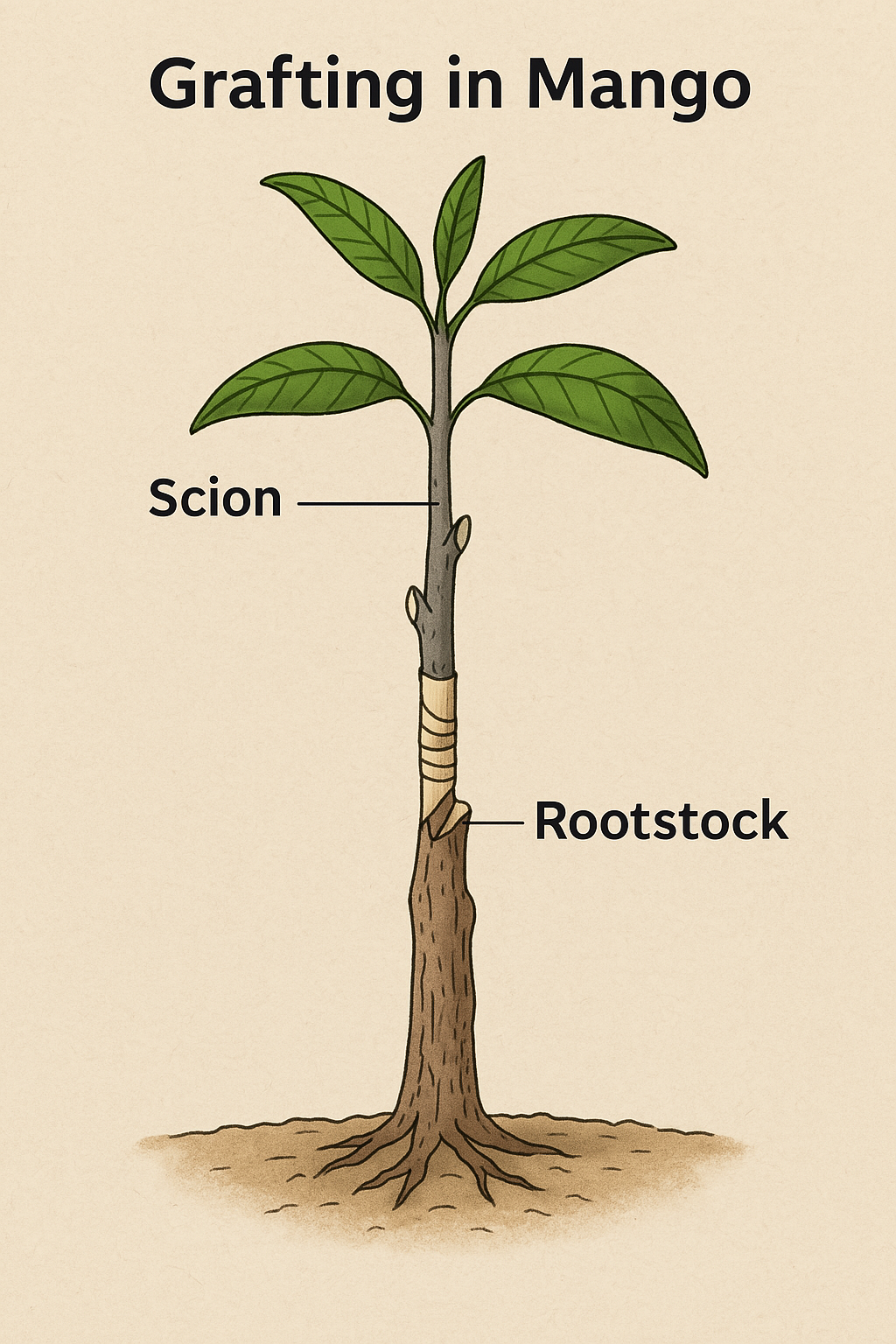
Grafting in Mango
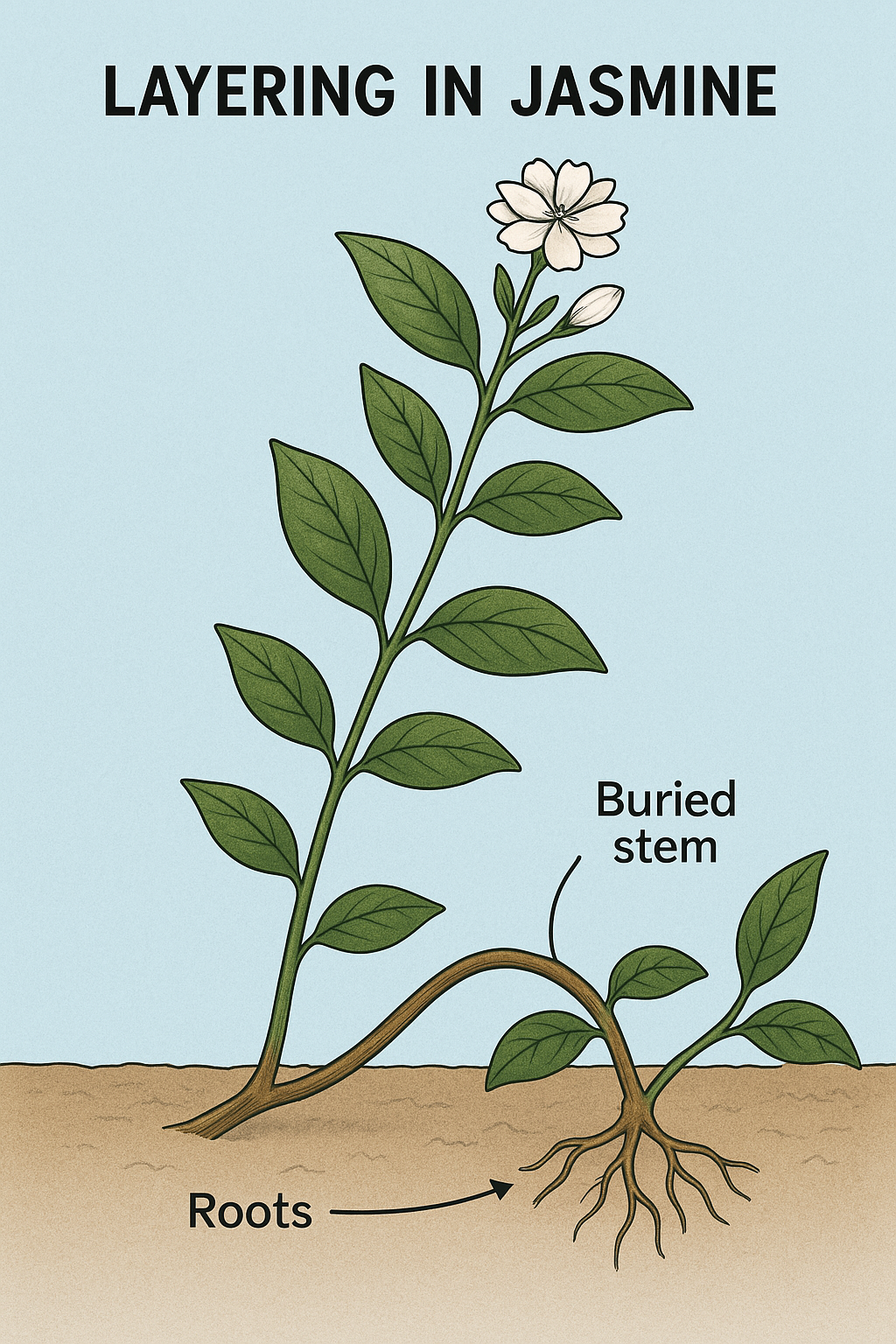
Layering in Jasmine
Cutting in Rose
Vegetative propagation through leaves and spores
-
The Bryophyllum is a plant whose leaves can grow into new plants. The leaves of the Bryophyllum are broad & fleshy. They have tiny buds (plantlets) present at their margins.
-
When the buds fall on moist soil, they germinate & grow into adult plants.
-
Leaves of Begonia also grow into new plants from their buds.

Plantlets in Bryophyllum
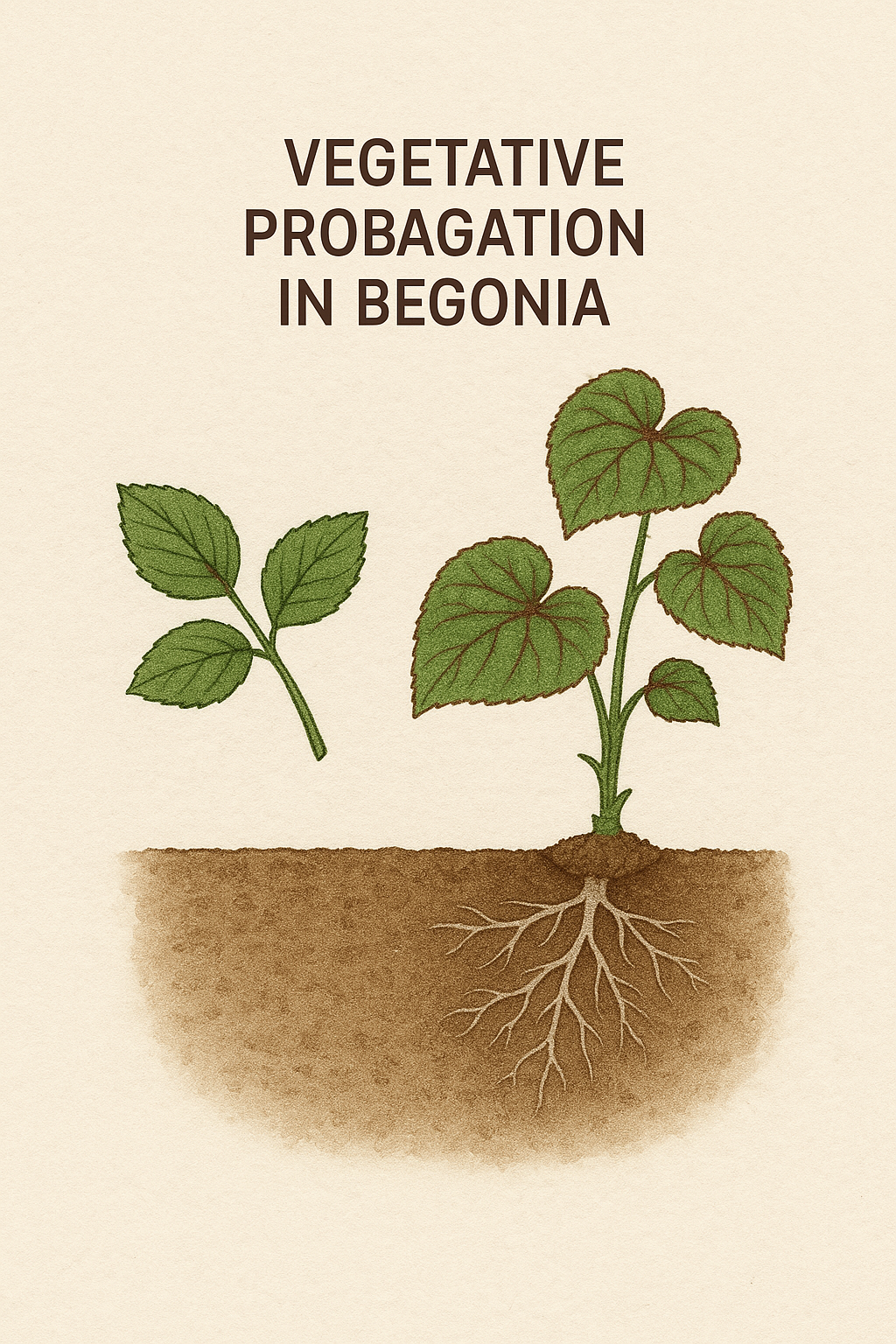
Vegetative Propagation in Begonia
Things you have learned!
- Each part of a seed plays a vital role in protecting, nourishing, and developing the future plant - making seeds essential for the plant life cycle.
- Seed germination is the first step in a plant’s life, turning a tiny seed into a growing plant. With the right amount of water, air, and warmth, a seed begins its journey to become a strong, healthy plant.
- Seed dispersal helps seeds move to new places so they can grow into healthy plants without too much crowding. Seeds travel through wind, water, animals, or by bursting open. This helps new plants grow in different places.
- Vegetative propagation is a way plants grow without using seeds. It can happen on its own (natural) or with our help (artificial). Plants like rose, potato, mango, and Bryophyllum are some examples of this way of reproduction.


